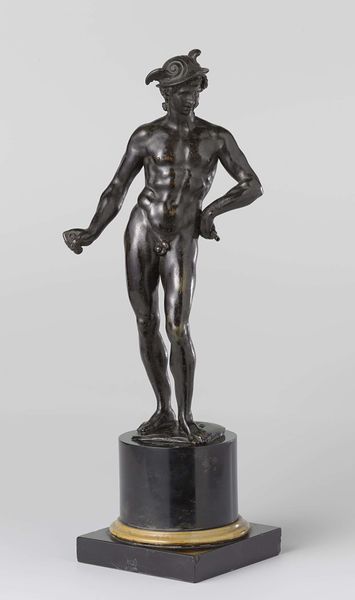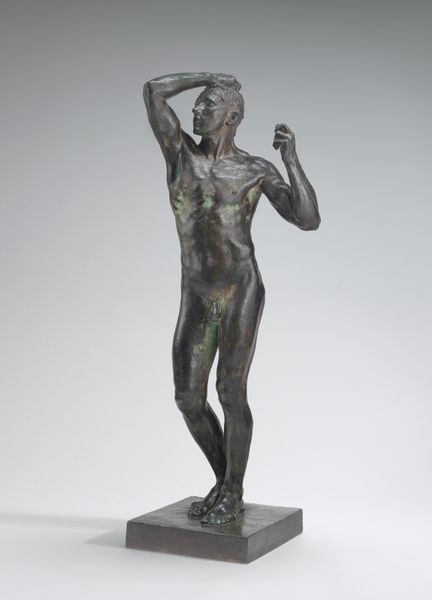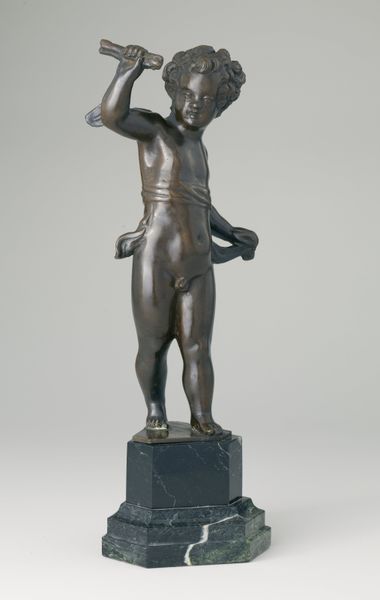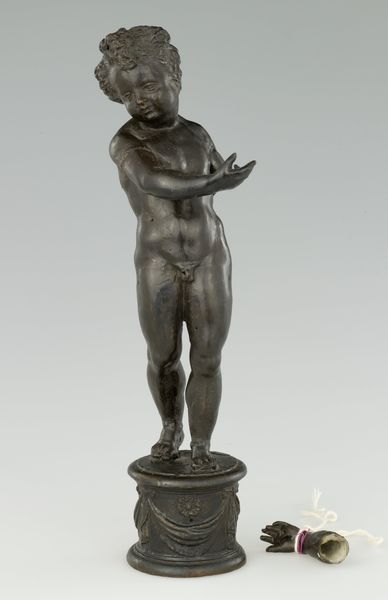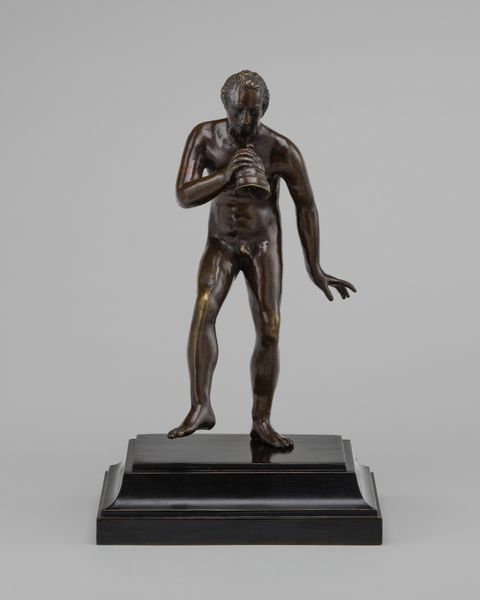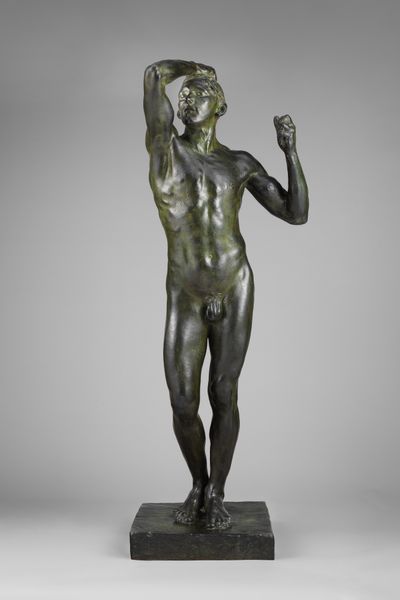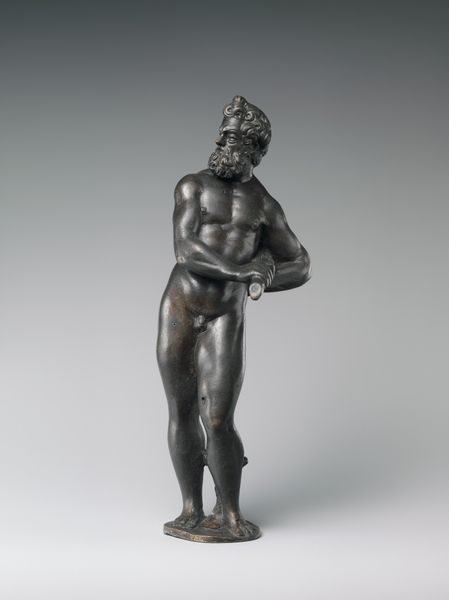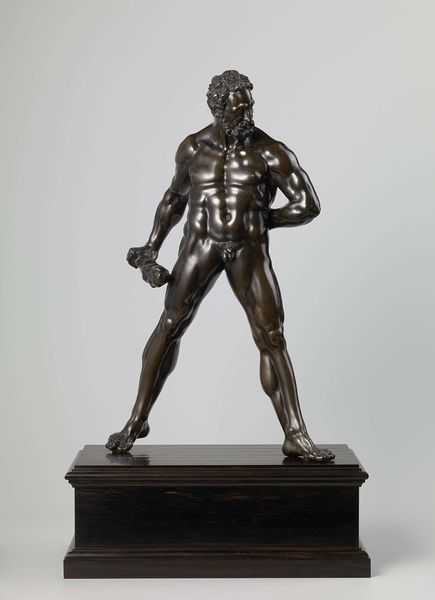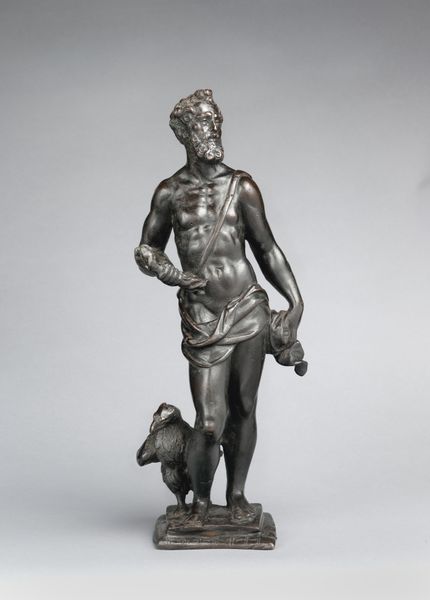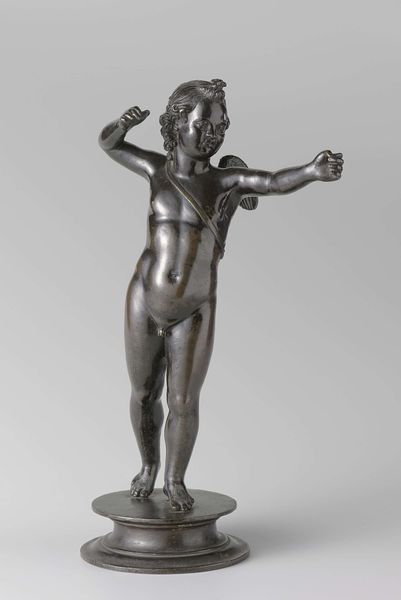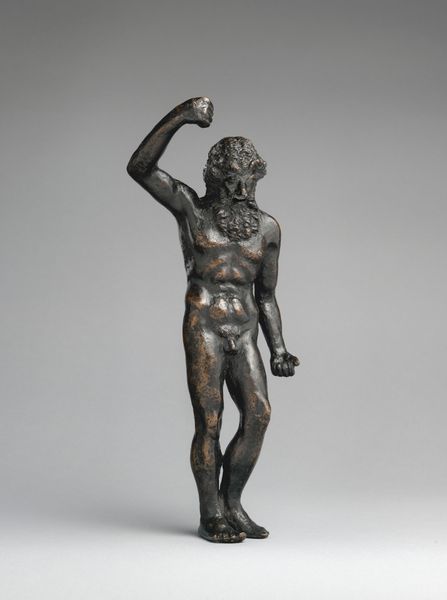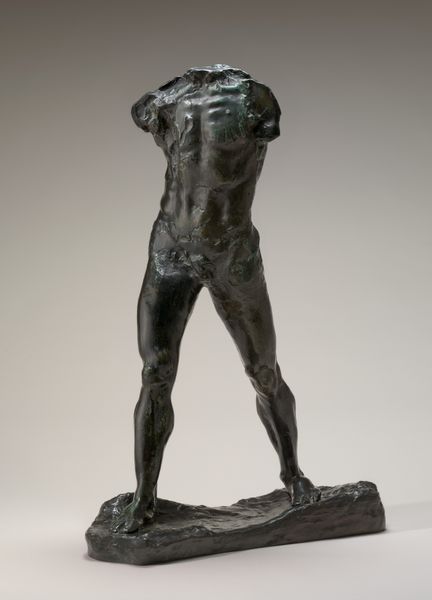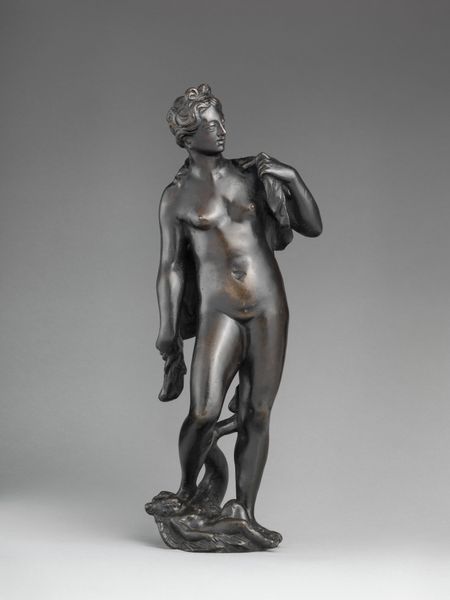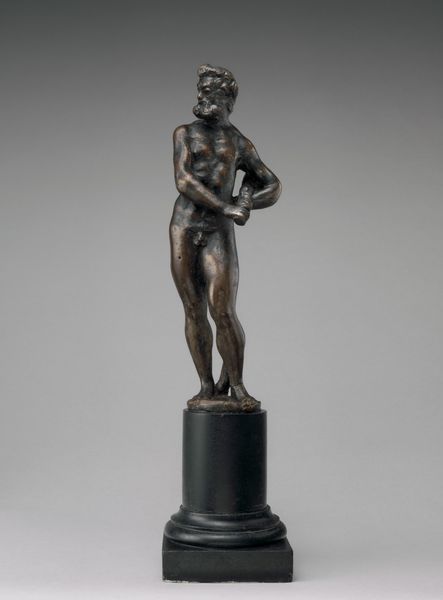
bronze, sculpture
#
sculpture
#
bronze
#
figuration
#
11_renaissance
#
sculpture
#
nude
Dimensions: height 71 cm, weight 45.5 kg
Copyright: Rijks Museum: Open Domain
Here we see a statue of Adam, alone, and clutching the infamous apple in his right hand. He is partially covered by a fig leaf. This emblem is a powerful one, representing not just the loss of innocence but also our complex relationship with knowledge and mortality. Consider the echo of this scene in the classical myth of Prometheus, who stole fire from the gods. He is bringing enlightenment to humanity but suffers eternal torment as a result. Like Prometheus, Adam’s act of disobedience is both a transgression and a catalyst for human consciousness. The apple, once simply a fruit, has become a symbol laden with cultural weight. It represents desire, temptation, and the irreversible moment of choice that defines our existence. This act reverberates through art history. We find echoes of it in medieval tapestries, Renaissance paintings, and even modern film. In viewing Adam's posture we see his emotional and psychological state as an expression of existential turning points that has played out across cultures and eras.
Comments
rijksmuseum about 2 years ago
⋮
Around 1500, bronze casting was still in its infancy north of the Alps. While Italian bronze-casters crafted their modelli in wax and clay, Netherlandish and German sculptors still worked from carved wooden models. Their figures – like this pair (which comes from Stift Heilingenkreuz, a Cistercian abbey near Vienna) – thus look rather stiff.
Join the conversation
Join millions of artists and users on Artera today and experience the ultimate creative platform.
